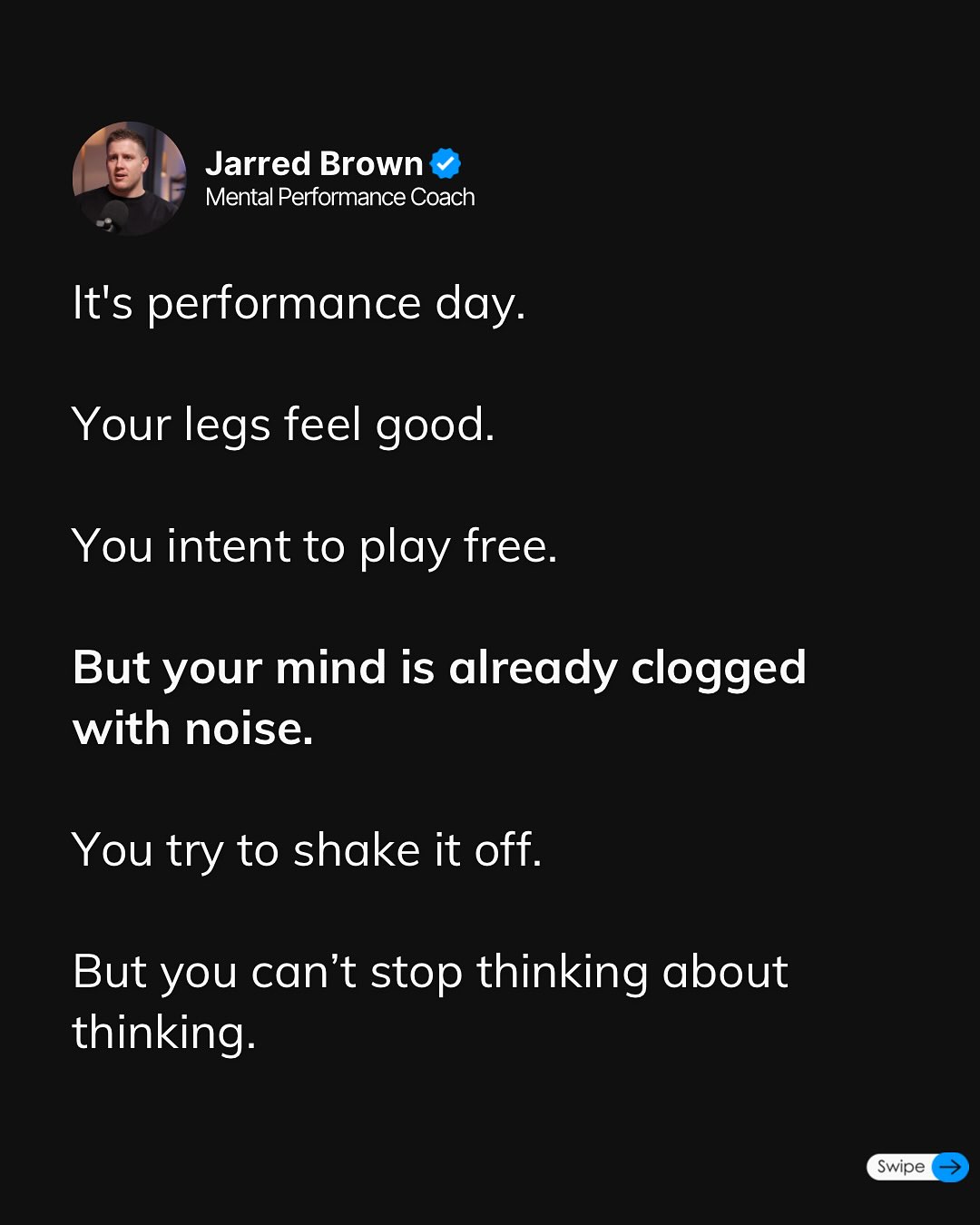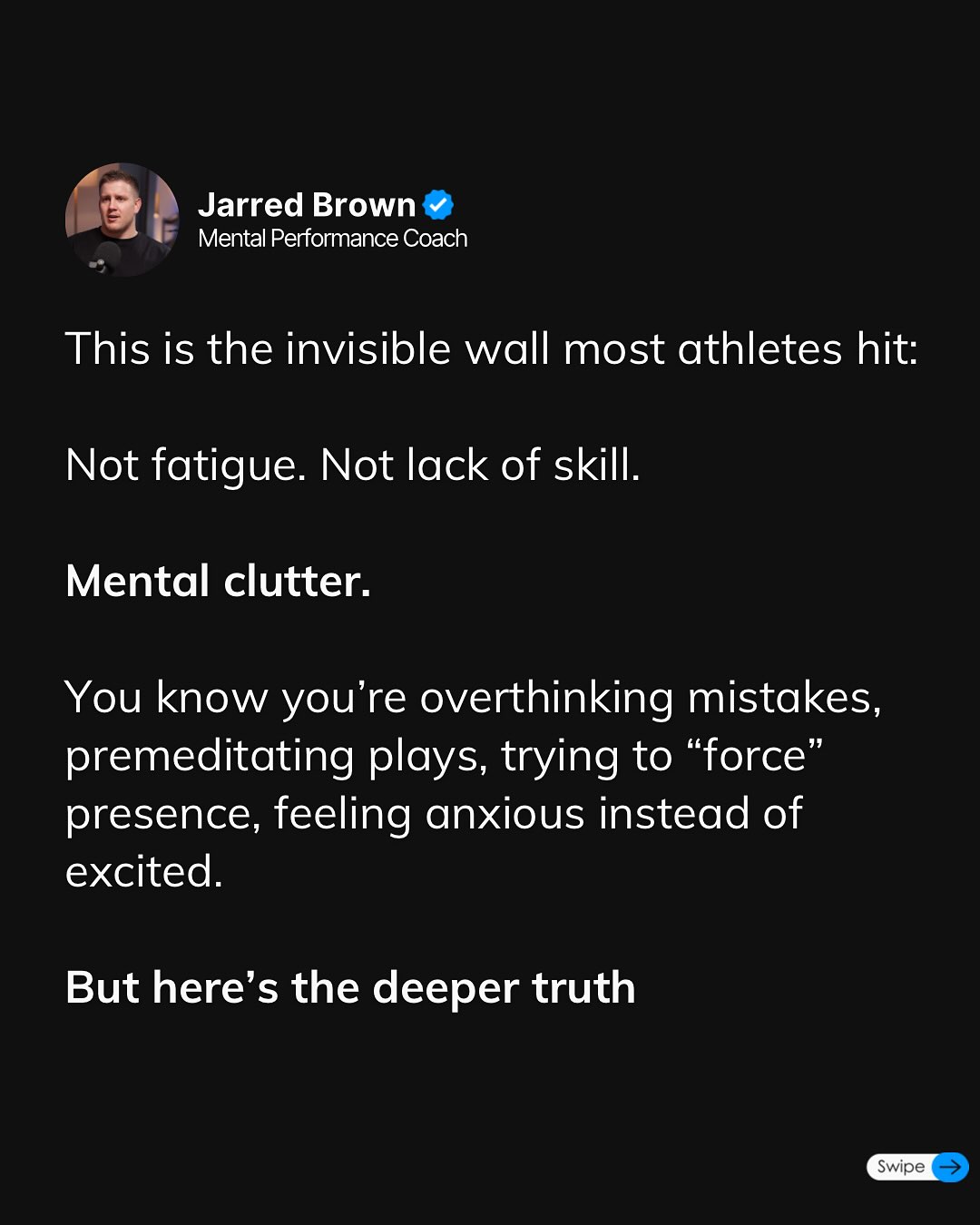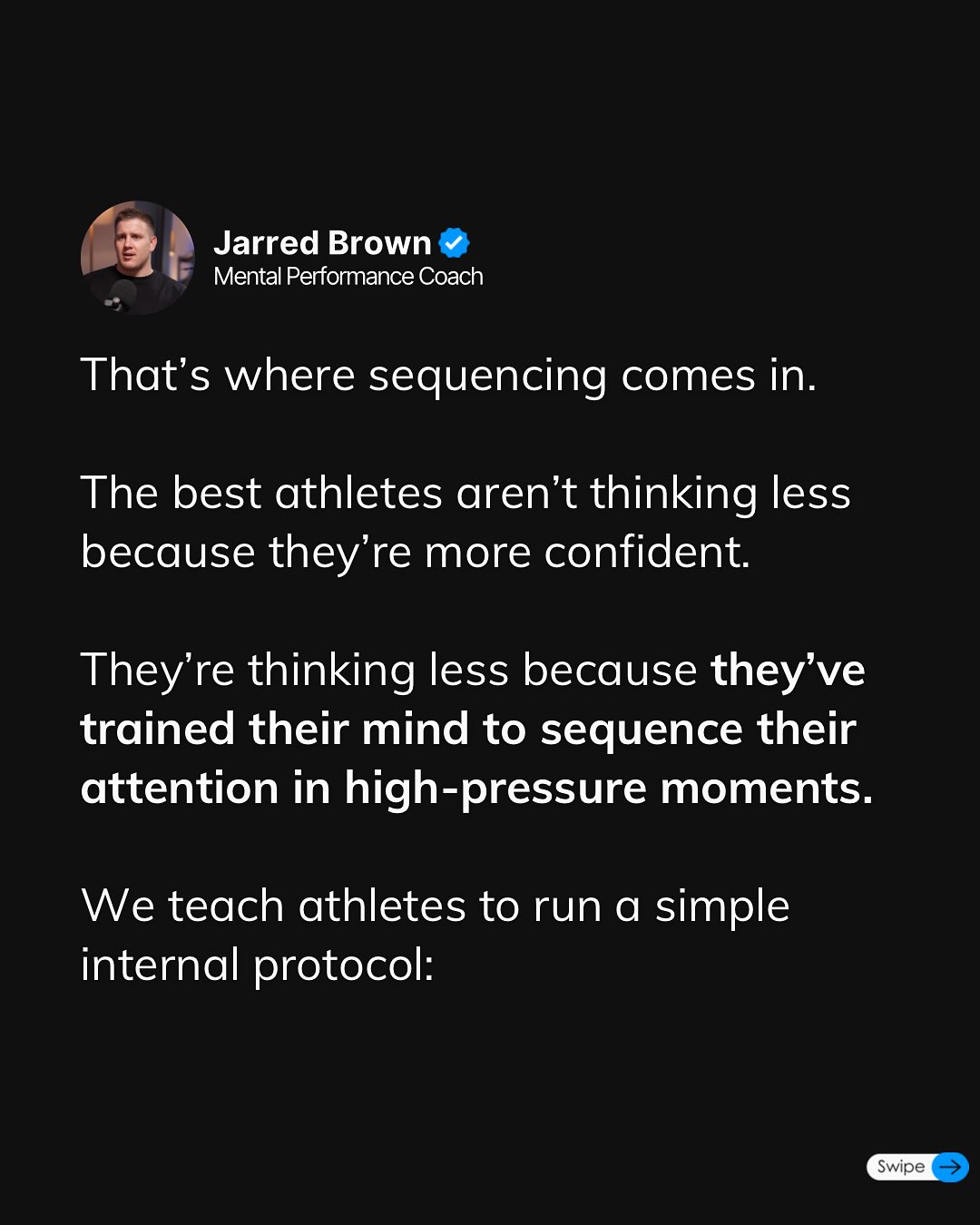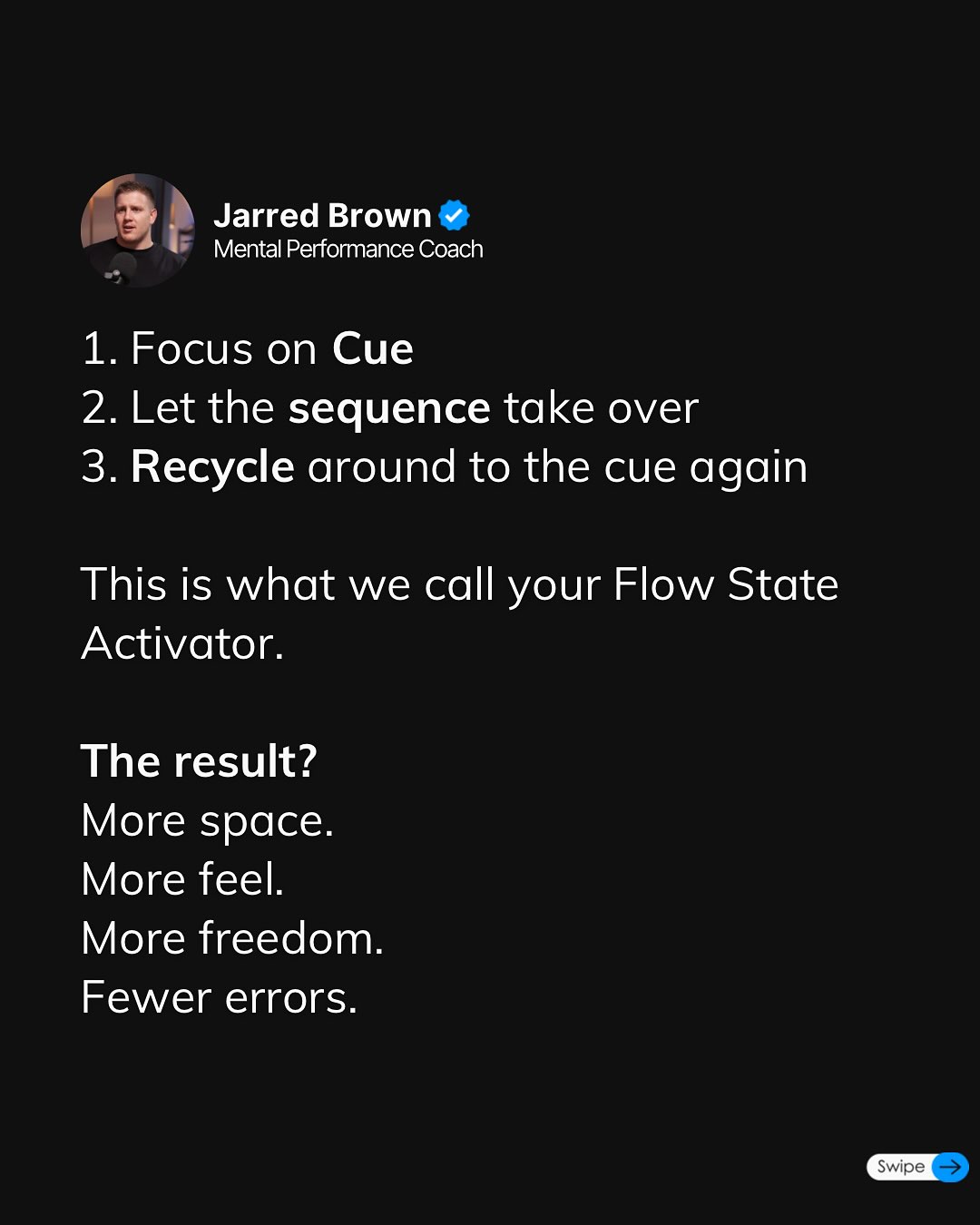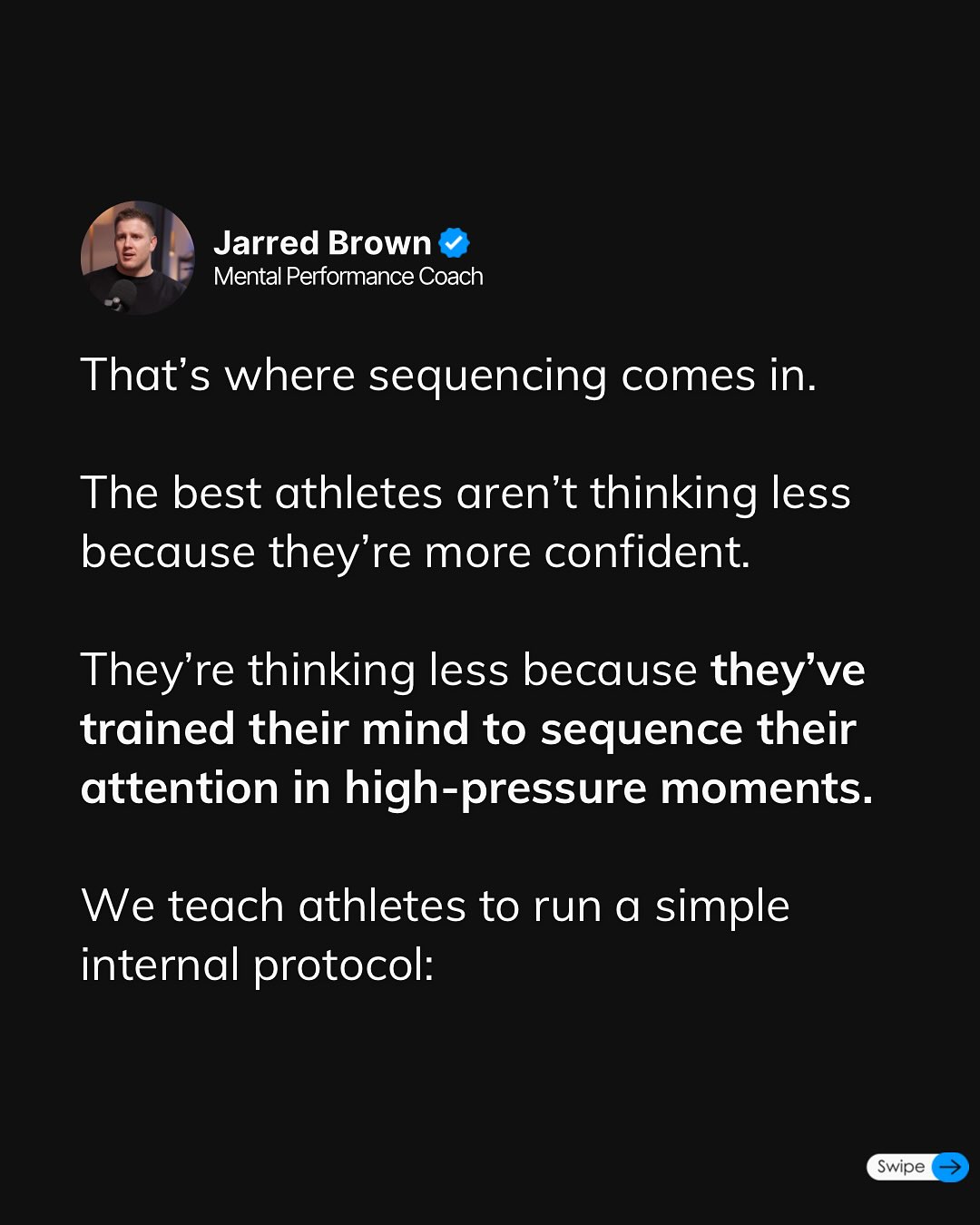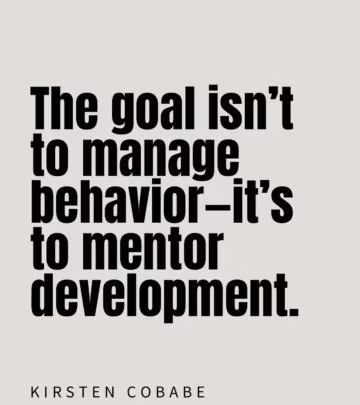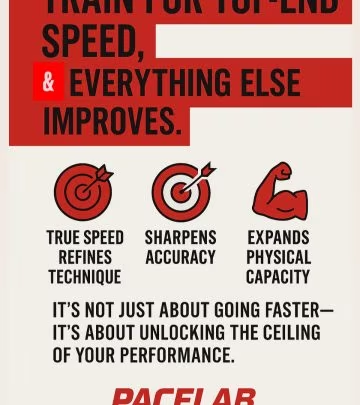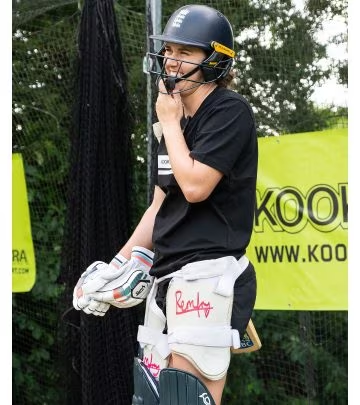Athletes Overcome Mental Overload With Flow State Activator
Mental clarity in high pressure: A protocol by Jarred Brown to clear the noise and win now.

Image: Instagram
In the high-stakes world of competitive sports, it’s not always the physical engine that fuels success—it’s the mental software. On performance day, everything can feel right: your legs are strong, and your body is primed. Yet athletes often hit an invisible roadblock. As mental skills coach Jarred Brown explains, it isn’t fatigue or a lack of skill; it’s mental clutter.
When athletes step into their arena, their minds are already overloaded. They can perceive thousands of things happening around them, but their attentional capacity is limited to roughly four meaningful pieces of information at once. This limited mental RAM means that if overthinking, fear of mistakes, or pressure fills that slot, clarity is lost before the competition even begins. Brown’s message is clear: Your brain isn’t broken—it’s simply overloaded by too much noise.
Invisible Wall In Action
Many athletes struggle with the constant chatter inside their heads. The pressure to perform often leads to overanalysis: rehashing past mistakes, premeditating every move, and forcing presence instead of playing naturally. Instead of letting their instincts guide them, players become trapped in a cycle of anxiety and overthinking that disrupts their flow. This mental overload creates an invisible wall between them and their optimal performance.
According to Brown, the problem isn’t that exceptional athletes think less because they are more confident. Rather, they’ve trained their minds to manage high-pressure moments by sequencing their attention. He emphasizes that it is not about silencing thoughts completely, but about organizing them in a way that maximizes clarity on the field.
Flow State Activator
Brown and his team have developed a simple internal protocol that athletes can use to clear the mental clutter. The protocol is built around three steps:
1. Focus on Cue
2. Let the sequence take over
3. Recycle around to the cue again
This method, which Brown calls the Flow State Activator, is designed to create more space for the athlete to be present. With a streamlined mental process, athletes report experiencing more feel, more freedom, fewer errors, and faster recovery. Essentially, the system upgrades the mental software that underpins the physical performance they have already honed.
For many athletes, the concept is a game-changer. It shifts the focus from simply reacting to the pressure to proactively managing it. Instead of allowing fixations on what might go wrong, the Flow State Activator trains the mind to remain in a state of neutral clarity—a space where decisions are made calmly and errors are minimized. This mental recalibration ensures that even when the atmosphere is charged with tension, the athlete’s performance remains undisturbed.
Brown’s teaching is rooted in the idea that mental clarity is not achieved by forcing one’s thoughts to stop, but by sequencing them effectively. He explains that most athletes unknowingly try to juggle too many thoughts at once. By restricting their focus to just a few meaningful cues, they can direct their limited attentional resources in a disciplined way. This translates to fewer mistakes and a more natural flow during competitions.
Additionally, Brown points out that the overthinking cycle is not a sign of weakness. In fact, it is an indication that the athlete’s mind is overworked. Recognizing the symptoms—anxiety about mistakes and an obsession with every single play—allows athletes to understand that the solution lies not in trying to think less but in thinking in a more organized manner.
Over the past few years, mental skills coaching has gained traction among top athletes. From Olympic competitors to professional team players, the practice of mental sequencing is becoming as fundamental as physical training. Brown, who has worked extensively with athletes across various sports, has seen firsthand the transformative power of this approach. He notes that those who master the technique don’t just perform—they win before the game even begins.
In a recent conversation with one athlete, Brown recalled, “I asked him, ‘When was the last time you felt clear and free out there?’ He hesitated and said, ‘Honestly… I don’t know.’ Once we implemented the sequencing protocol, the clarity returned almost immediately. It was like the edge had come back.” This anecdote embodies the underlying principle of his coaching: The mind, when properly managed, becomes an ally rather than a foe.
The implications extend far beyond individual performance. Many elite athletes are now incorporating mental sequencing into their daily routines. From morning meditation to purposeful drills that emphasize focus over frenetic action, a broad shift in training paradigms is underway. These athletes are learning that a mental reset isn’t a weakness but a strategy for sustainable success.
Jarred Brown’s approach is resonating widely, particularly on social media, where athletes and coaches alike share success stories about mastering mental sequencing. His clear, evidence-based method is sparking conversations about how small changes in thought processes can lead to monumental improvements on the field.
Ultimately, the lesson is simple but profound: You’ve built your physical engine, and now it’s time to upgrade your mental software. When athletes master the art of managing their attention with techniques like the Flow State Activator, they unlock a level of performance that transcends mere skill. It is this fusion of mind and body—a carefully sequenced harmony—that sets true champions apart.
Read full bio of Srijita De

